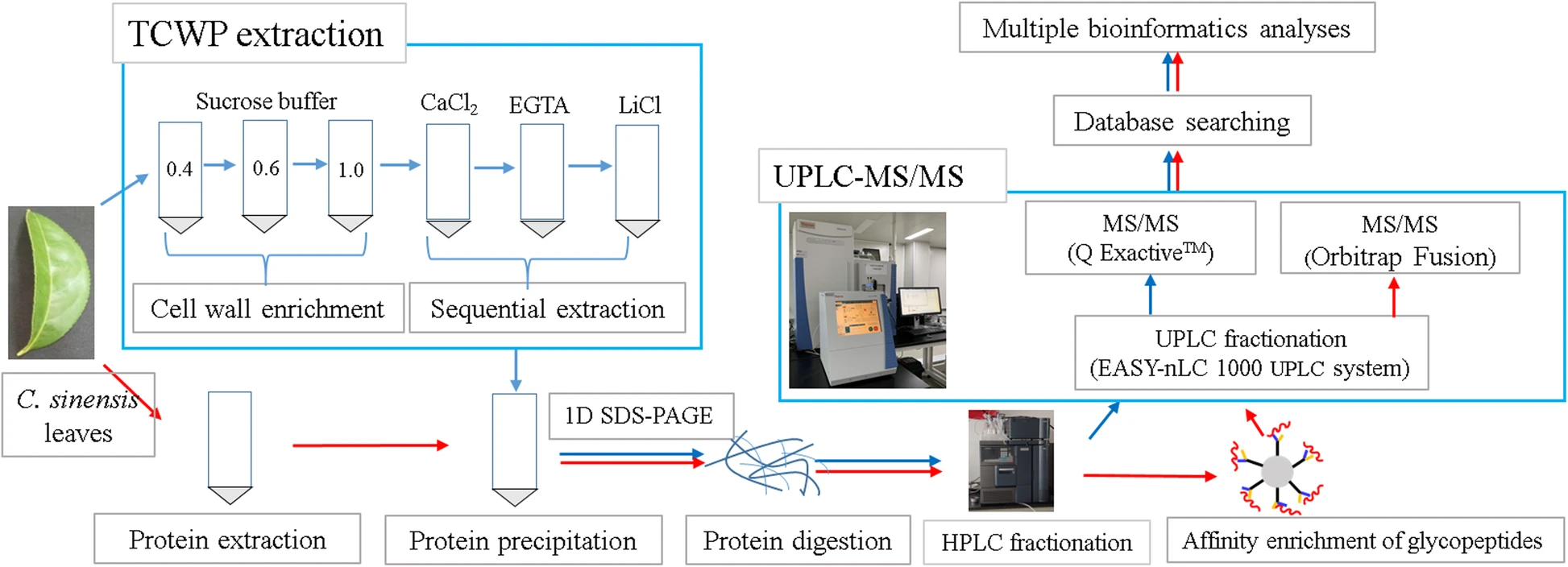Cell Wall Isolation and Cell Wall Protein Extraction Service
Cell wall isolation and cell wall protein extraction analysis aims to efficiently obtain plant cell walls and their associated proteins. The plant cell wall is a crucial structure that maintains cell shape and provides mechanical support, while also participating in signal transduction and environmental responses. As functional cores, cell wall proteins are extensively involved in processes such as cell elongation, stress regulation, and intercellular communication. This service combines mechanical disruption with gentle extraction methods under low-temperature conditions to maximally preserve the native conformation and activity of cell wall proteins.
Cell wall isolation and cell wall protein extraction service is widely used in the fields of botany, agricultural science, and bioenergy. It supports functional studies of cell wall proteins, analysis of plant stress resistance mechanisms, exploration of lignocellulose degradation pathways, and the discovery of cell wall-associated biomarkers. This service holds significant research and application value for elucidating plant growth regulation, pathogen defense, and intercellular communication mechanisms.
Services at MtoZ Biolabs
Leveraging high-efficiency centrifugation systems and high-resolution mass spectrometry platforms, MtoZ Biolabs has launched the cell wall isolation and cell wall protein extraction service focusing on the systematic analysis of cell walls and their associated proteomes. Through a standardized cell wall isolation workflow combined with sequential extraction strategies using low-salt, high-salt, and denaturing buffers, we efficiently extract cell wall proteins with varying binding strengths. LC-MS/MS is then employed to comprehensively analyze protein composition, abundance, and post-translational modifications, delivering quantitative data and functional annotations that support research into plant structure and stress response mechanisms. MtoZ Biolabs provides, but is not limited to, the following services:
1. Plant Cell Wall Isolation
Using differential centrifugation and density gradient separation, we isolate highly pure cell wall components suitable for various plant tissue types.
2. Cell Wall Protein Extraction
By employing salt extraction, high ionic strength buffers, and detergent-assisted strategies, we isolate both weakly and tightly bound proteins to ensure comprehensive proteome coverage.

Liu, Y L. et al. BMC Plant Biology, 2021.
Figure 1. Experiment Workflow for Cell Wall Protein.
Sample Submission Suggestions
1. Sample Types
Supports a wide range of plant tissue samples, including leaves, roots, stems, and seeds. Fresh or flash-frozen samples are recommended to ensure the integrity of cell wall structures and protein activity.
2. Sample Handling
Samples should be protected from repeated freeze-thaw cycles to minimize protein degradation. If preliminary processing (e.g., homogenization) has been performed, please specify the buffer system and additives used.
3. Sample Transportation
Samples should be stored at -80°C and shipped on dry ice, maintaining a full cold chain during transport to prevent degradation or denaturation of cell wall proteins. For tailored shipping advice, please contact technical support if needed.
Service Advantages
1. High-Purity Cell Wall Isolation
Utilizes optimized isolation strategies to effectively eliminate cytoplasmic contamination, ensuring high purity and integrity of cell wall components.
2. Diverse Protein Extraction Methods
Combines salt extraction, high salt, high pH, and detergent-based approaches to sequentially extract loosely and tightly bound cell wall proteins, enhancing proteome coverage.
3. Mass Spectrometry-Compatible Workflow
The service workflow is fully aligned with downstream mass spectrometry requirements, ensuring clean extracts with appropriate protein concentration compatible with various MS platforms.
4. Customized Project Support
Protocols can be adjusted based on plant species, tissue types, and treatment conditions to support research across plant biology, developmental biology, and stress physiology.
Applications
1. Plant Stress Response Mechanism Studies
Cell wall isolation and cell wall protein extraction service can be used to analyze expression changes of cell wall proteins under drought, salt stress, pathogen invasion, and other conditions, revealing mechanisms of environmental adaptation in plants.
2. Analysis of Plant Development and Differentiation Processes
By studying the functional roles of cell wall proteins during cell elongation, division, and differentiation, this service supports the understanding of plant developmental regulatory networks.
3. Cell Wall Modification and Remodeling Research
Cell wall isolation and cell wall protein extraction service can be applied to investigate structural changes of the cell wall and expression patterns of related enzymes, helping to uncover dynamic remodeling mechanisms under various physiological conditions.
4. Crop Improvement and Functional Gene Screening
Through differential analysis of the cell wall proteome, key factors related to resistance, growth, or quality can be identified to support molecular breeding research in crops.
FAQ
Q1: Why Is it Necessary to Extract Cell Wall Proteins Separately?
A1: Cell wall proteins are structurally distinct from intracellular proteins and are often present in low abundance and tightly bound forms. Separate extraction improves purification efficiency, avoids contamination from intracellular proteins, and enables more accurate analysis of their functions and expression profiles.
Q2: Is it Possible to Extract Cell Wall Proteins from Fixed or Lyophilized Samples?
A2: Fresh or flash-frozen samples are recommended to best preserve protein activity and structural integrity. Fixed or lyophilized samples may reduce extraction efficiency, so it is advisable to consult with the technical team to evaluate feasibility before use.
Deliverables
1. Comprehensive Experimental Details
2. Materials, Instruments, and Methods
3. Data Analysis, Preprocessing, and Estimation
4. Bioinformatics Analysis
5. Raw Data Files
How to order?







